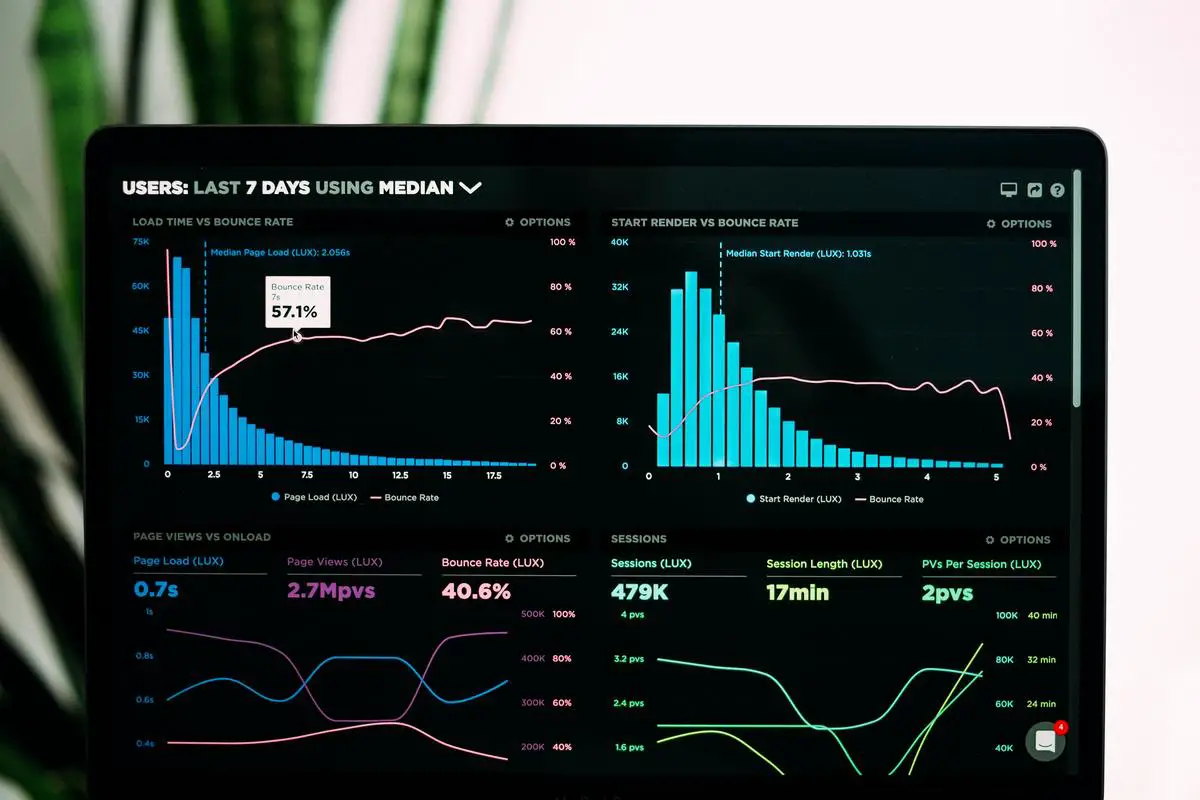In today’s digital age, understanding the fundamentals of web traffic and using analytics tools can no longer be considered optional. When maintaining a website, whether it be for business or personal use, gaining insights into web traffic patterns is vital for growth. This knowledge allows us to explore key terms in web analytics such as unique visitors, page views, bounce rate, exit rate, traffic sources, and conversions. Learning how to use Google Analytics to track these metrics uncovers a goldmine of information that allows us to see how our online presence can be improved. Furthermore, this acquired data becomes a guide in implementing strategies for web traffic improvement, using methods such as SEO, content marketing, social media marketing, and paid advertising.
Understanding Web Analytics
Introduction to Web Analytics
Web analytics is the practice of gathering, analyzing, and reporting internet data for the purpose of understanding and optimizing website usage. It’s not merely a tool for measuring website traffic, but a method for business and market research, as well as to assess and enhance the effectiveness of a website. Here, we will cover the basics of web analytics, its importance, and how one can use it for measuring website traffic.
Importance of Web Analytics
Understanding web analytics is vital for a website’s success. It enables site owners to learn about their audience, such as how many are visiting, where they come from, and how they interact with the site’s content. This understanding can inform decisions about the website’s design and overall content strategy, thereby boosting visibility, engagement, and ultimately revenue.
Key Terms in Web Analytics
- Unique Visitors: Unique Visitors are individuals who have visited your website at least once during the report period. Each visitor is only counted once, regardless of the number of times they visit the site.
- Page Views: Page views is the total number of pages viewed. Repeated views of a single page are counted.
- Bounce Rate: The bounce rate is the percentage of single-page sessions in which the person left your site from the same page they entered, without performing any action there. A lower bounce rate is invaluable, as it suggests site visitors are engaging with your content and journeying through your site.
- Exit Rate: Exit rate is the percentage of site departures that happened from a specific page. This metric doesn’t account for whether the user has seen previous pages, only that the designated page was the final one visited.
- Traffic Sources: Traffic sources indicate where your visitors are coming from. Traffic sources can include direct visits, referrals from other websites, and visits from search engines or social media platforms.
- Conversions: Conversions are the number of visitors who took a desired action on your website. This could be anything from filling out a form, signing up for a newsletter, or making a purchase.
How to Monitor Website Traffic
Web traffic can be monitored using various analytics tools. The most commonly used tool is Google Analytics. It’s free to use and provides comprehensive data about your website’s traffic.
- Sign up for Google Analytics: To use this, you’ll need a Google account. Once you have this, go to the Google Analytics website and sign up for an account. You’ll be asked to enter details about your website.
- Install Tracking Code: After you’ve filled out your website details, you’ll be given a unique Google Analytics code. This tracking code needs to be placed on every page of your website that you want to track.
- Understand Google Analytics Dashboard: The Google Analytics dashboard provides a wealth of data about your website. Here, you can view the total number of page views, unique visitors, bounce rate, exit rate, conversions, and the sources of your traffic.
By regularly monitoring web analytics, you can gain insights that allow you to improve your website and make it more appealing and user-friendly for your audience. This, in turn, can increase conversions, leading to increased business success. Remember, data without action is worthless. Make use of this analytical data to formulate strategies that will promote website growth and success.

Photo by lukechesser on Unsplash
Using Google Analytics
Setting Up Google Analytics
Google Analytics is a powerful tool for monitoring your website traffic. Here’s how to set it up for your website:
- Visit the Google Analytics website and sign up for a new account if you don’t have one already.
- Go to the Admin setting, which is on the bottom left of the page.
- Select “Create Property” and then “Web”.
- Enter the details for your website including the name, URL, industry and reporting time zone.
- Click the “Create” button to generate your tracking ID.
Your tracking ID will be a string of numbers that starts with ‘UA-‘. This is what links your website to your Google Analytics account.
Once you have your tracking ID, you’ll need to embed the Google Analytics code (including your tracking ID) on every page of your website you want to track. How you do this will depend on your website’s platform.
For websites built with HTML, paste the Google Analytics code just before the closing </head> tag on each page. If you’re using a CMS or website builder like WordPress or Wix, look for an option to add Google Analytics in the settings.
Using Google Analytics to Track Website Traffic
Once Google Analytics has been set up, it’s time to use it to track and measure your website traffic. Here’s how:
- Navigate to your Google Analytics account.
- Click on ‘Realtime’ in the left panel to observe real-time activities on your site.
- Select ‘Audience’ to see more detailed visitor metrics such as sessions, users, pageviews.
- Under the ‘Acquisition’ section, you can see where your traffic is coming from like organic search, direct, social, referral etc.
- In the ‘Behavior’ section, you can see what actions visitors are taking on your website.
Understanding Google Analytics Reports
Google Analytics generates many useful reports that can tell you a lot about your website’s traffic. Here’s how to interpret some of the most important ones:
- ‘Audience Overview’: This report gives you a basic snapshot of your users like new users, sessions, bounce rate, session duration, etc.
- ‘Acquisition Overview’: This report shows how your users found your site. It breaks down into: Direct (users who type your URL into their browser), Organic Search (users who find your site through a search engine), Social (users who find your site from social media) and Referral (users who click a link on another site to get to yours).
- ‘Behavioral Reports’: These reports help you understand how users interact with your site, showing you things like which pages they visit and actions they take.
- ‘Conversion Reports’: If you’ve set up goals in Google Analytics (like form submissions or purchases), this report shows you how many users completed those goals.
Regularly monitoring your Google Analytics data and understanding these reports will help you understand your audience better and improve your website’s performance over time.

Implementing Traffic Improvement Strategies
Understanding Website Traffic Improvement Strategies
Website traffic is critical for the growth and longevity of any online business or platform. In order to effectively increase website traffic, it’s essential to understand and implement various website traffic improvement strategies such as Search Engine Optimization (SEO), content marketing, paid advertising, and social media marketing.
Implementing Search Engine Optimization (SEO)
SEO strategies focus on increasing a website’s organic traffic by improving its visibility on search engines. Here are some key ways to enhance your website’s SEO:
- Conduct Keyword Research: Identify words and phrases that people frequently use when searching for services or products similar to yours.
- Optimize Website Content: Incorporate your target keywords into the website’s content, including the title, headings, body text, and metadata.
- Improve Website Loading Speed: Search engines favor websites that load quickly, so improve your website’s loading speed by compressing images and using a reliable web host.
- Implement Link Building Strategies: Links from authoritative external websites boost your website’s credibility, which can enhance your search engine ranking.
Making the Most of Content Marketing
Content marketing revolves around creating and distributing valuable, relevant, and consistent content to attract and retain an audience. Here’s how to implement this strategy:
- Identify Content Types: Determine what content types (e.g., blog posts, infographics, videos, eBooks) appeal to your target audience.
- Create High-Quality Content: Develop engaging and relevant content that answers your audience’s questions or solves their problems.
- Use SEO Best Practices: Incorporate target keywords, create engaging headlines, and use internal and external links in your content.
Using Social Media Marketing
Social media can be a powerful tool for increasing website traffic. Here’s how to harness it:
- Identify Suitable Platforms: Different demographics favor different social media platforms. Determine where your target audience spends most of their time.
- Engage with Your Audience: Build relationships with your audience by responding to comments, asking questions, and sharing valuable information.
- Share Content Regularly: Regularly posting increases your brand’s visibility and creates more opportunities to engage with your audience.
Leveraging Paid Advertising
Paid advertising can quickly boost your website traffic by placing your website at the top of search engine results or on popular social media platforms. Here’s how to use it:
- Identify Advertising Platforms: Determine which platforms (e.g., Google Ads, Facebook Ads) are most likely to reach your target audience.
- Set a Budget: Determine how much you are willing to spend on your advertising campaign.
- Monitor and Adjust: Regularly analyze the performance of your ads. Adjust your strategy based on these insights to maximize your ROI.
Using Web Analytics to Guide Traffic Improvement Strategies
Data from web analytics tools, especially Google Analytics, provide valuable insights about your website visitors. They show you where your visitors come from, which pages they visit, how long they stay, and more. Use this data to understand what’s working and what’s not, and adjust your strategies accordingly to improve your website traffic.

Having delved into understanding web analytics and the practical use of Google Analytics, we are better prepared to monitor, analyze and optimize our websites. Armed with knowledge of key metrics, the pressing importance of web traffic measurement, and strategies for improved digital traffic, we unlock the potential of our web presence. From here, we can dynamically react to user behavior, optimize content for better engagement, and effectively leverage marketing strategies. Therefore, by becoming conversant with web analytics and website traffic improvement strategies, we position ourselves for success in the digital realm, seizing every opportunity that comes with an informed and data-driven approach.